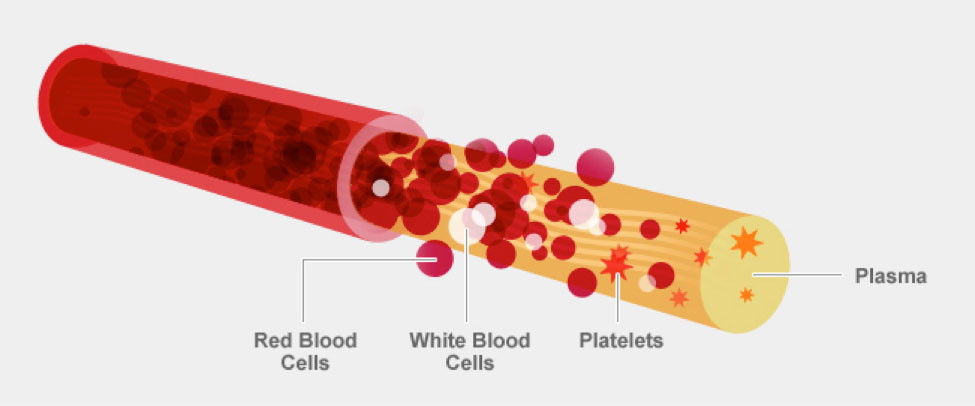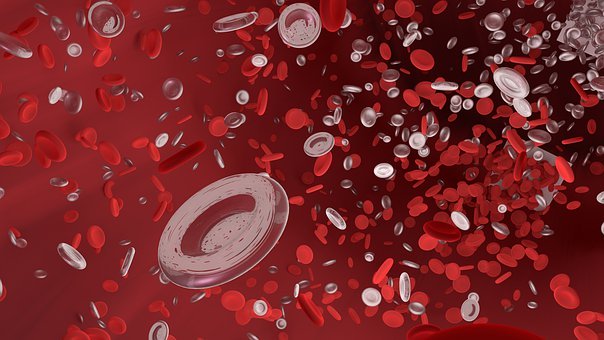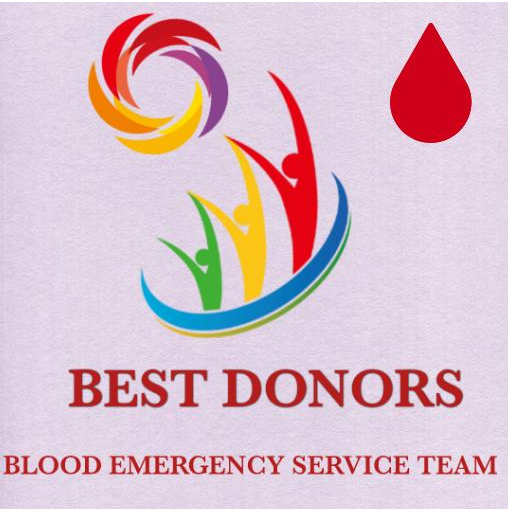INFORMATION ABOUT PLATELETS AND PLATELETS DONATION:

There are four components in our blood.
Let us know about Platelets.
WHAT ARE PLATELETS?

Platelets donation is a noble cause.
Any person with kind mind and humanity can come forward to donate platelets.
Platelets are cells present in blood that help our body stop bleeding by forming clot.
If any of our blood vessels gets damaged, then it will signal to platelets and platelets will rush to that affected part and form clot to fix the damage.
Platelets are made in your bone marrow along with your white blood cells and red blood cells.
Another name for platelets is thrombocytes as clot is also called as thrombus. Once platelets are formed and circulated in our body, they will live for 8 to 10 days.
A platelet looks like a small plate. Regular check-up is needed from a healthcare provider to check whether our bone marrow is making our platelets count.
WHAT IS A HEALTHY PLATELET COUNT?
- In general platelet count varies between 150,000 to 450,000 platelets.
- Bleeding occurs if platelet count falls below 10,000 to 20,000.
- When the platelet count is less than 20,000, chances are likely to be more serious if you’re cut or bruised.
- Some people make too many platelets from 500,000 to more than 1 million.
HAVING TOO MANY PLATELETS:
When we are having too many platelets, it is thrombocytosis, and there are two types:
Abnormal cells in the bone marrow cause an increase in platelets comes under primary thrombocytosis.
The same condition as primary thrombocytosis, but may be caused by an ongoing condition or disease such as anemia, cancer, inflammation, or infection comes under secondary thrombocytosis.
When there are symptoms, they include spontaneous blood clots in the arms and legs, which if untreated can lead to heart attack and stroke.
In severe cases, the patient might have to undergo a procedure called a platelet apheresis.
This lowers the platelet count by removing the blood, separating out the platelets, and returning the red blood cells back to the body.
For example, if you have an infection or anemia, you treat those conditions and the platelet count comes down.
HAVING TOO LOW PLATELETS:
Some symptoms show that you have low platelets.
These include easy bruising, and frequent bleeding from the gums, nose, or GI tract.
There are a wide range of causes, including:
- Medications
- An inherited condition
- Certain types of cancer, such as leukemia or lymphoma
- Chemotherapy treatment for cancer
- Kidney infection or dysfunction
- Too much alcohol
HOW TO FIND IF YOUR PLATELET COUNT IS TOO LOW?
Mildly low levels often do not produce any symptoms.
When symptoms occur they include:
- Dark, red spots on the skin.
- Headache after minor injuries.
- Easy bruising.
- Spontaneous or excessive bleeding.
- Bleeding from the mouth or nose after brushing teeth.
People who experience symptoms should contact their doctor immediately.
Research showed that Cranberry juice, alcohol reduces the platelets count.
PLATELETS RELATE TO CARDIOVASCULAR DISEASE:
If you have too many platelets, it can increase your risk for clotting.
For example, you have enough number of platelets and if they’re sticking together too much it can increase your chance of having a heart attack or stroke.
HOW TO INCREASE PLATELET COUNT NATURALLY?
Eating certain foods may increase platelet count naturally.
Foods to eat to increase platelet count include:
- Folate-rich foods
- Foods rich in vitamins B-12, C, D, and K
- Iron-rich foods
To increase platelets count several vitamins and minerals food can be consumed.
Low levels of B-12 in the body may also contribute to low platelet counts.
Milk products also contain vitamin B-12, but some research suggests that milk can affect the platelets improvement.
SUPPLEMENTS TO INCREASE PLATELETS COUNT:
There are some supplements to increase platelets count.
They are
- Papaya leaves extract juice as well as pills
- Chlorophyll
- Melatonin.
WHAT IS IT LIKE DONATING PLATELETS?
Platelet donation is a little similar than a regular blood donation but duration of time differs.
Here’s how:
- They can only be donated at blood banks.
- They cannot be given at a blood drive.
- Donation requires a machine to extract your platelets and returns the blood back to you.
- The process takes about three hours for this donation.
- Both arms are used during donation.
- The blood is drawn from one arm, the platelets are extracted using a machine and the remaining blood components are returned to you through the other arm.
- You can donate platelets up to 24 times a year compared to a maximum of 6 times a year for blood donation.
Here’s a quick illustration of what happens during a donation:
- A relatively small amount of blood is drawn from your arm and goes into a machine called a blood cell separator.
- These cells then go into a sterile, single-use plastic bag.
- Meanwhile, the rest of your blood – the plasma, red cells and white cells – is returned to you.
ELIGIBILITY FOR PLATELETS DONATION:
- Platelets can be donated 24 times a year and it would be better if at least 2 weeks gap is there for every donation.
- Donor must be above 18 years of age and at least 50 kgs in weight. Height is also will be considered.
- If under medication, a gap of 2 days must be given before platelet donation.
- Platelet count of donor must be at least 2, 75,000 to be eligible for donation.
- Hemoglobin count must be between 13 g/dL – 17 g/dL.
- Pulse rate must be between 72-100.
- Blood pressure should be normal 120/80.
SINGLE DONOR PLATELETS:
Blood of 350 ml will be taken from a single person which is same as normal blood donation and transferred to a platelets separator machine (Apheresis machine) and after collecting the platelets, again blood will be sent back to the donor’s body.
This process of taking 350 ml of blood and sending back after collecting platelets will be done 6 to 8 times and the whole process will be taken around 75-90 minutes.
Almost 300 ml will be taken from a single donor.
These are called Single Donor Platelets.
Generally, they have a life span of 5 days so need to be utilized within 5 days of extraction.
RANDOM DONOR PLATELETS:
Platelets obtained from regular blood donation are called random donor platelets (RDP).
They are also called pooled platelets.
But the quantity extracted from whole blood is very little.
So, it will be extracted from whole blood units collected in blood donation camps or donated in blood banks on the date of requirement and stored in blood banks, which meets the requirements of the patient.
They are important cells in your blood that help your body control from bleeding.

I gave the information under “NATURAL FOOD FOR HEALTHY LIVING” article about the food to eat to improve haemoglobin as well as platelets count naturally.
You can get awareness on blood donation and organ donation as well.
Improve positive thinking and come forward to donate platelets that would help the needy a lot on time, which improves standard of living of ours as well as the patients.
Kindly share your opinion or any additional points if I miss anything here.
Gaining knowledge is not about knowing everything about something; it is about knowing something about everything.


Nice article
thank you
Very nice
thank you
Being a blood I am unaware about platlet donation . Thank you for your article sir. Pl send articles regarding blood donation
Sure. Thank you for reading this article.
Nice
Thanks a lot